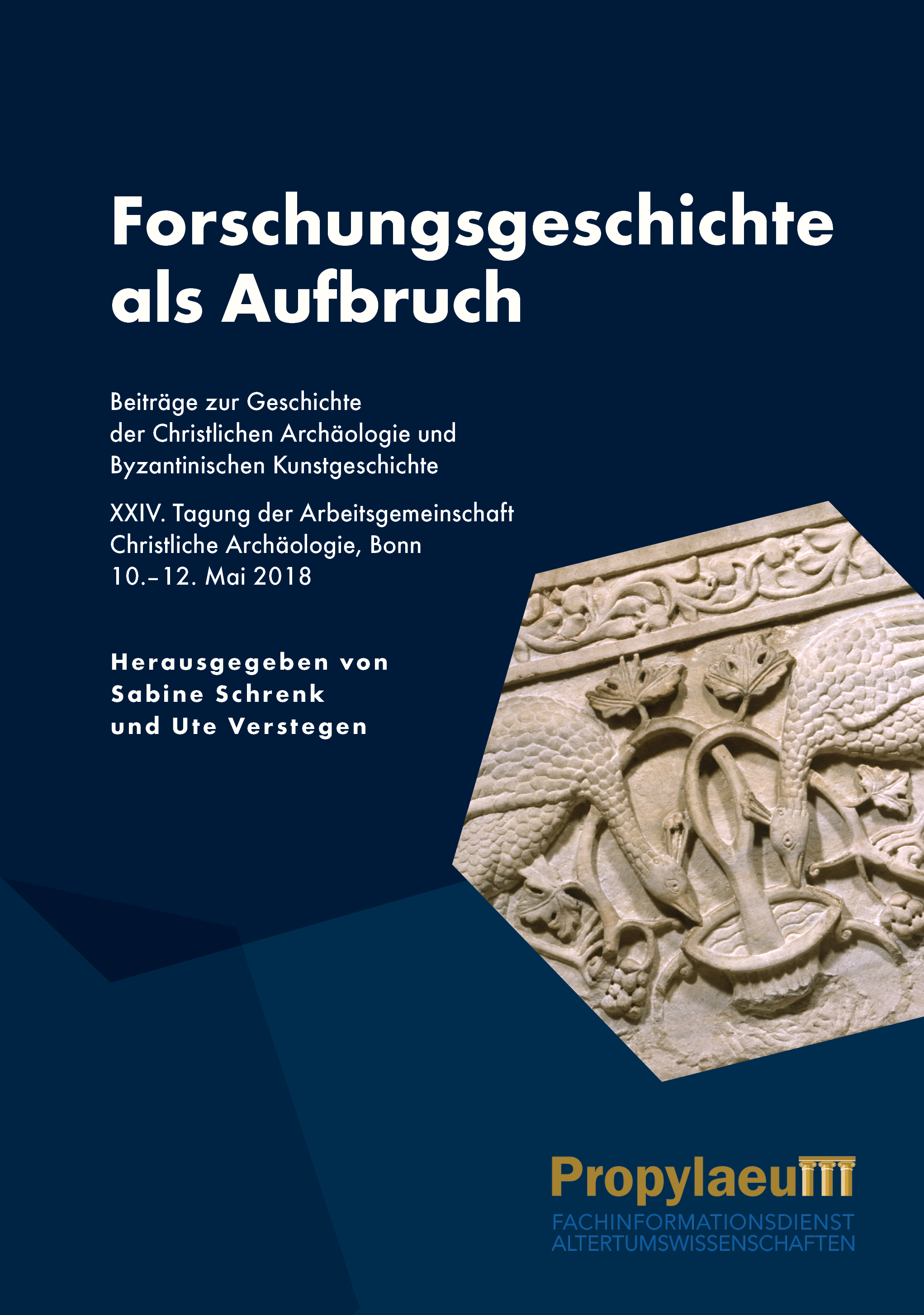Drauschke, Jörg
Hinter den Mauern und auf dem offenen Land: Leben im Byzantinischen Reich
Wie lebten die Menschen im Byzantinischen Reich, wie gestaltete sich ihre Lebenswirklichkeit in den Städten und auf dem Land? Was war jeweils anders? Es lohnt sich, diese Frage aus interdisziplinärer Perspektive zu stellen.
Die Ausstellung „Byzanz – Pracht und Alltag“ der Kunst- und Ausstellungshalle der Bundesrepublik Deutschland in Bonn und des Römisch-Germanischen Zentralmuseums (26.2.-13.6.2010) eröffnete für die Byzanzforschung neue Perspektiven. Die begleitende Tagung “Hinter den Mauern und auf dem offenen Land: Neue Forschungen zum Leben im Byzantinischen Reich” nahm diesen Ansatz auf und vertiefte im interdisziplinären Rahmen die Themen der Ausstellung. Im Mittelpunkt stand dabei das Alltagsleben innerhalb der urbanen und ländlichen Regionen des Reiches. Die Beiträge des Bandes führen die Ergebnisse der Mainzer Tagung zusammen. Sie widmen sich der Hauptstadt Konstantinopel, den Städten und ihrem Umland auf dem Balkan und in Kleinasien sowie dem alltäglichen Leben zur See, in Klöstern und auf dem Land.
Der Doppeladler: Byzanz und die Seldschuken in Anatolien vom späten 11. bis zum 13. Jahrhundert
Das nach der für die Byzantiner vernichtenden Schlacht bei Manzikert 1071 im zuvor byzantinischen Anatolien entstandene Reich der Rum-Seldschuken war bis zu seiner Auflösung Anfang des 14. Jahrhunderts der wichtigste Nachbar der Byzantiner an ihrer Ostgrenze. Das Reich der Rum-Seldschuken vereinte Seldschuken wie griechisch-orthodoxe Einwohner und stand schon daher in einem intensiven Kontakt mit Byzanz, der sich vor allem in Handel, im Austausch von Kunstschaffenden und in Eheschließungen manifestierte. Diese sozialen und politischen Beziehungen sowie die durch ethnische und religiöse Toleranz geprägte Koexistenz der verschiedenen Völkerschaften innerhalb des Seldschukenreiches waren Grundlage für große Kunst. Gleichwohl wissen wir heute nur wenig über die Rum-Seldschuken und ihr Interagieren mit den Byzantinern, sodass bisweilen der Eindruck vorherrscht, es habe kaum einen kulturellen Austausch gegeben.
Der Tagungsband legt die Ergebnisse einer interdisziplinären Tagung vor, die vom 1. bis zum 3. Oktober 2010 im Römisch-Germanischen Zentralmuseum Mainz stattfand, um diesem Eindruck die Grundlage zu entziehen und um eine Diskussion über die Probleme der byzantinisch-seldschukischen Beziehungen zu eröffnen.
Forschungsgeschichte als Aufbruch: Beiträge zur Geschichte der Christlichen Archäologie und Byzantinischen Kunstgeschichte, XXIV. Tagung der Arbeitsgemeinschaft Christliche Archäologie, Bonn, 10.–12. Mai 2018
Die Beiträge entstanden im Rahmen der XXIV. Tagung der „Arbeitsgemeinschaft Christliche Archäologie zur Erforschung spätantiker, frühmittelalterlicher und byzantinischer Kultur“ (AGCA), die im Mai 2018 in Bonn stattfand. Vertreterinnen und Vertreter der institutionell verankerten Christlichen Archäologie und Byzantinischen Archäologie und Kunstgeschichte in Deutschland, Italien, Spanien, der Türkei, den Niederlanden, Österreich und der Schweiz berichten über die Geschichte des Faches am jeweiligen Standort. Entscheidende Forschungspersönlichkeiten werden vorgestellt, wichtige nationale und internationale Ausgrabungen kommen zur Sprache, ebenso die Aktivitäten der nationalen und internationalen Forschungsstellen und Museen. So entsteht ein breiter Überblick über die Geschichte des Faches, der deutlich macht, wie facetten- und traditionsreich die Christliche Archäologie und Byzantinische Archäologie und Kunstgeschichte ist – ein Fundament für die Zukunft des Faches, für Fortsetzungen und Veränderungen.









